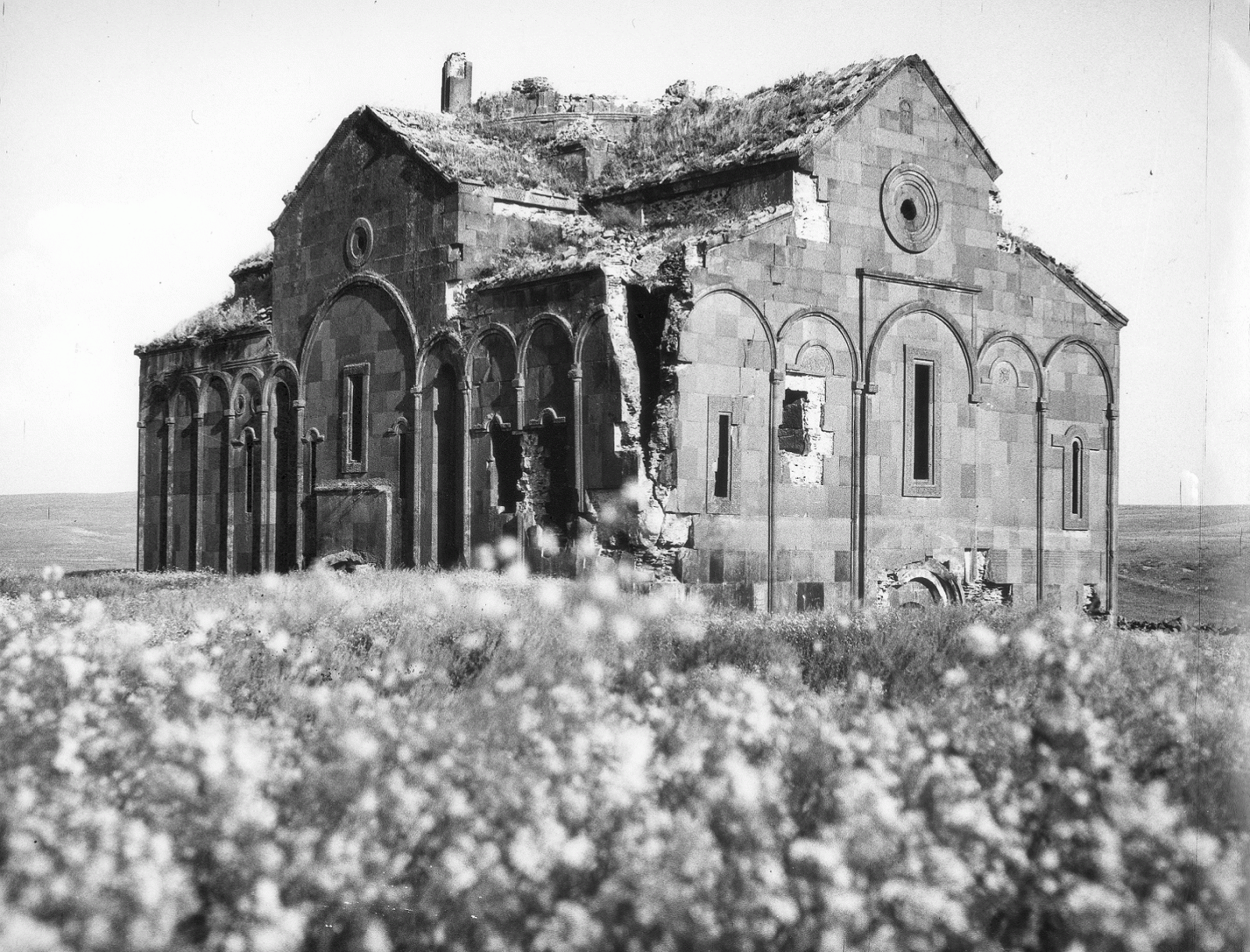Forschung
Armenian Architecture and the Romanesque: A New Perspective
Beatrice Spampinato

The north-west side of the Surb Astvacacin Cathedral, Ani, Turkey. CSDCA Archive.
The comparison between Armenian and Western medieval architecture has a long history, and concerning Italian historiography, it starts in coincidence with the first publication on Armenian Art. This dissertation proposes a critical overview of Italian historiography on Armenian Architecture, focusing on the comparative methodological choices adopted by scholars during the past century. More precisely, moving from the first to the second half of the twentieth century there was a methodological shift. On the one hand, Rivoira, Bettini, and Golzio considered art history in a linear and evolutionary way; this approach allows one to imagine only a direct and historically documented contact between two cultures to explain similarities or – using their words – influences. On the other hand, Alpago Novello and Ieni, and lately Piero Pierotti, approach the issue from a different point of view; their interdisciplinary and global perspective allowed them to return to this topic by imagining new scenarios other than direct bipolar contact. Considering this retrospective, the still poor historical sources concerning Armenian colonies in Italy and Italian trade to the Caucasus will probably not help us explain the similarities observed in the architecture of these two areas at the turn of the 11th century. Indeed, the historiographic analysis encourages additional methodological reflections that may lead to a re-reading of the question by considering the comparison no longer as a case of interchange but as a case of convergence; this happens when the narrative of different and distant things assumes similarities over time. Through a case study that considers the School of Ani and the Pisan Romanesque as a case of convergence, the aim is to test the potential of this methodology, to bring out the motivations of the historiographic phenomenon examined, and to bring new arguments to the art-historical discourse on the two terms of comparison.


